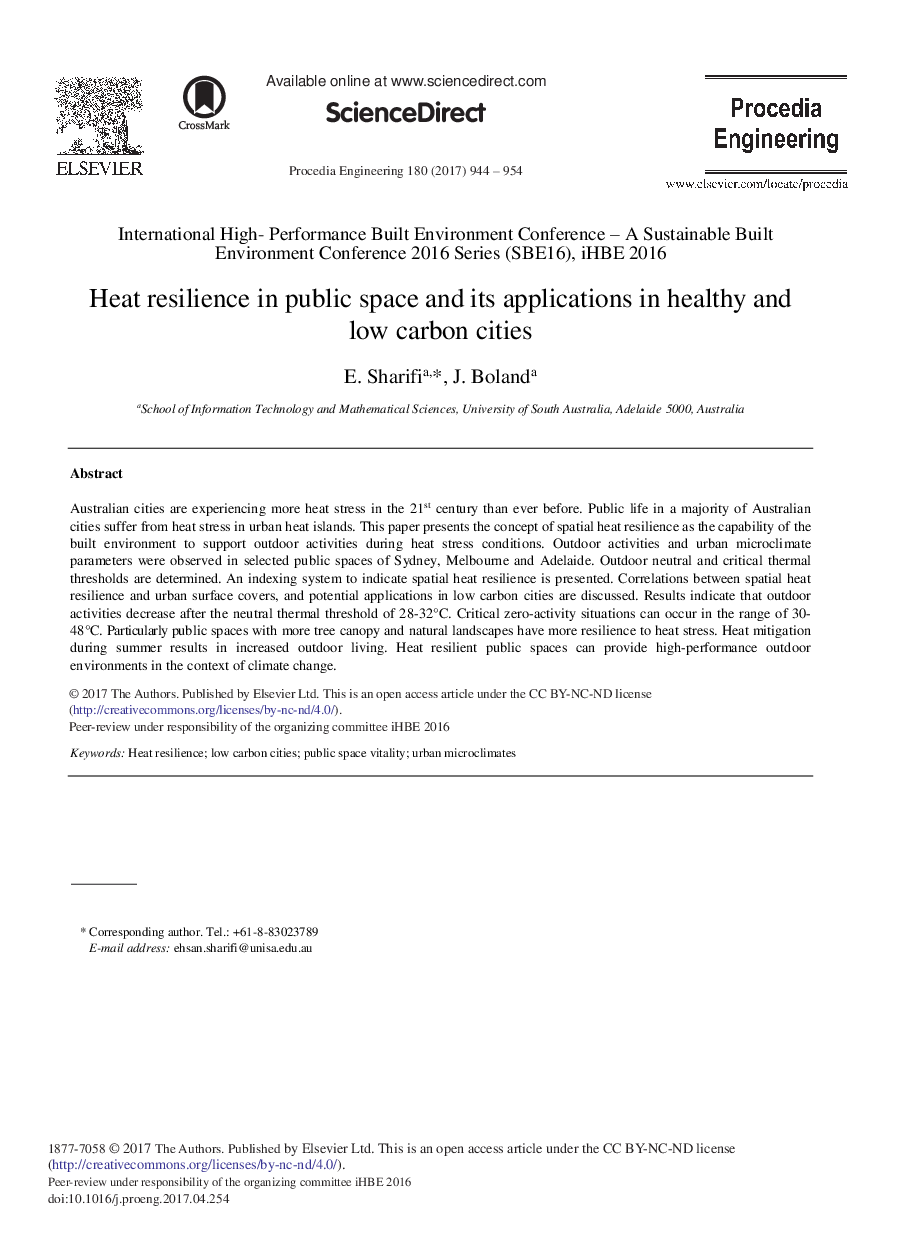| Article ID | Journal | Published Year | Pages | File Type |
|---|---|---|---|---|
| 5029000 | Procedia Engineering | 2017 | 11 Pages |
Australian cities are experiencing more heat stress in the 21st century than ever before. Public life in a majority of Australian cities suffer from heat stress in urban heat islands. This paper presents the concept of spatial heat resilience as the capability of the built environment to support outdoor activities during heat stress conditions. Outdoor activities and urban microclimate parameters were observed in selected public spaces of Sydney, Melbourne and Adelaide. Outdoor neutral and critical thermal thresholds are determined. An indexing system to indicate spatial heat resilience is presented. Correlations between spatial heat resilience and urban surface covers, and potential applications in low carbon cities are discussed. Results indicate that outdoor activities decrease after the neutral thermal threshold of 28-32 °C. Critical zero-activity situations can occur in the range of 30-48 °C. Particularly public spaces with more tree canopy and natural landscapes have more resilience to heat stress. Heat mitigation during summer results in increased outdoor living. Heat resilient public spaces can provide high-performance outdoor environments in the context of climate change.
